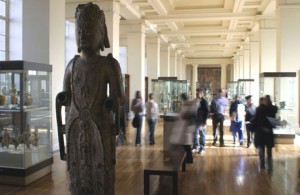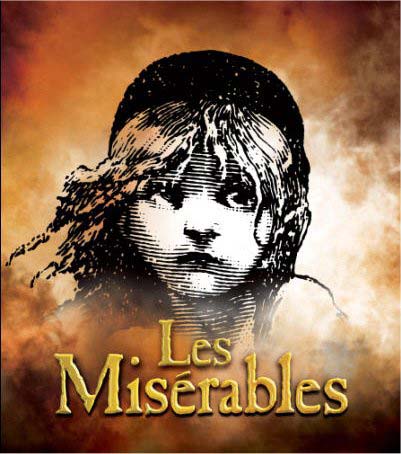Today I decided I would run my own Kate Fox type experiment while shopping on Oxford Street. Knowing how obsessed the British are reputed to be about their queuing, I intentionally stood out of place. I was the only person waiting in line for the cash register, so instead of standing in what was obviously the entrance to the queue path, I stood awkwardly to the side and began my own line. I even made sure to angle myself so that I was not directly facing the register, attempting to further the confusion. The results were quite amusing. One man it seemed had decided he was better of mumbling to himself and walking in circles rather than try to get behind me. Another shopper kept walking back and forth between where he knew the real queue should start and where I was standing. However I noticed that no one actually asked me if I was on the line. In the States, I would simply ask the person in front of me if they were waiting to be helped, they would give me an answer, and that would be the end of it.  (Image taken from )
(Image taken from )
I definitely understand what Fox was talking about now, when she said that the British will harrumph and complain, but won’t actually take any action to solve their problem. A few simple words to me would have easily resolved the issue and we all would have felt a lot less awkward.
Missing Queues
September 9th, 2010 · 2 Comments
Tags: 2010 Sarah
The Cold-ish British
September 9th, 2010 · 4 Comments
In her social analysis Watching the English, Kate Fox explains that, to the English, their car is their own private space, insulated from the entire world (169). The English also seek to “maintain as much privacy as possible, by pretending that… [others] do not exist” on the tube, bus, and other systems of transportation (139). Similarly, the strategic placing of a phone on a nearby table/counter in a pub can act as a social guard that makes an impenetrable magical barrier, protecting the user. Lastly, if the user holds the phone, they often feel connected to friends stored in the address book, reassuring them that they aren’t alone (86). I have noticed all these things in different locations, and I consider them all symptomatic of the “social dis-ease” that Fox discusses in her book. However, I have noticed similar results in many different other areas as well, in general and specifically on a long walk I took to try and find some famous street art.
Take, for instance, the incessant displays of public affection. People “snog” on the escalator going down to the subway, sitting at booths in pubs, at stoplights on scooters, on the street corner, on the tube, everywhere. There are also a superfluous amount of twenty-something couples holding hands, in a variety of social settings. Couples walking at five o’clock in suits and formal dresses hold hands. Couples drinking in pubs hold hands at or under the table. Holding hands, though in America generally limited to teens, is standard protocol for much older couples.
There are also an incredible amount of these young adults (23ish-35ish) waiting at tube stops for their significant others. Literally, people line the walls surrounding the stairs leading down to the tube. It’s amazing. They are so committed to their other (or at least want to appear so, or are afraid to ride the tube by themselves) that they are willing to sit there and wait, for a decent amount of time, for their significant other. Perhaps I’m just heartless, but I think this is silly. These are examples of two phenomenon mentioned in the first paragraph: both isolating oneself, as couples create mini-worlds in which only they exist (and make out), and a constant thirst for human connection, reinforcing that one matters/one is cared for.
This miniaturizing and need for affection is, in my opinion, because the rest of the culture is essentially cold. Walking down the street, I tried to look at people and give them friendly (yet not creepy) looks to see if they would be returned. I received a few quizzical looks, but people mostly either looked the complete opposite direction of me, or down at their shoes. Also, practically whenever we walk into pubs, we are either greeted by ominous stares or silence. Yes, this could just be because we’re Americans, but I’ve also noticed that when other Brits walk into pubs, they aren’t often greeted by bartenders or other patrons with smiles. When you drink at a pub, you do not mingle with other customers – you are there with your friends, and you stay within this microsphere. Talk too loudly on the tube, and you will be shunned, shushed, or yelled at. There are countless other examples of this similar type of behavior. No, Brits are not friendly people.
All of this makes me miss America in a small way. If you smile at someone on the street, they will usually smile back at you. Saying “hello” to a stranger will usually be reciprocated (and you won’t be considered a crazy person). Because of this social warmth, people do not feel the need to make out all the time in public spaces, reinforcing that they are together, that they are not isolated. The actual acknowledgement of others’ existence would also render excessive snogging a bit awkward. Twenty-five year old couples don’t hold hands nearly as often, because they don’t need to. American society is more open, and coordinately, people act less insecurely. Our expressions of love are privatized, as our society is, as a whole, more open.
Tags: 2010 ChristopherB
Aum
September 9th, 2010 · 1 Comment
Most places of worship, be they churches, cathedrals, synagogues or mosques make me feel intimidated and slightly targeted. I find that churches in particular seem dark and gloomy. The Shri Swaminarayan Mandir however, was quite the opposite. I had never been to a Hindu temple, never really knew much about the religion except for a few basic facts I retained from high school, and so I didn’t quite know what to expect. But the mandir with its intricately carved marble and limestone walls was breathtaking. The white stones have a brightening effect, creating an atmosphere optimism and light that I hadn’t found, at least not to the same degree, in any of the churches we have visited so far. The ritual that we observed (feeding the god-statues there afternoon meal) was also different from any religious experienced I had participated in before. I have always felt that in Judaism and Christianity (the religions I am most familiar with) that the music is more chant-like and dreary. The music we heard in the mandir however, was loud and lively and colorful. It was unashamedly celebratory, and I really responded to that.

(Picture taken from http://www.mandir.org/photogallery/mandirmood_day.htm)
I’m willing to bet that most of Western culture has no real concept of what Hinduism is, what its origins are, or how it is practiced. I was shocked when I learned how the statues are tended. They are fed, tucked in for a nap, and have their clothing changed just as one might a child. This is completely different from my own religious experience where idolatry is prohibited, based on the idea that one should only worship “The God” and that there is only one God.
Tags: 2010 Sarah
Diplomatic Gifts: Issues of Colonial Appropriation in the White Tower Museum
September 9th, 2010 · 4 Comments
In addition to its collection of British royal armour, the White Tower Museum at the Tower of London had an incredible collection of armour and weaponry from countries including China, Japan, Germany, and Russia. Of particular interest to me was a helmet and a dagger, both of Indian origin. The dagger, also known as a Katar, is decorated with a scene which includes the Hindu deities Krishna (playing the flute) and Vishnu. Both serve a cerimonial purpose and were not meant for use in battle.
What suprised me when reading the plaque next to these items was the was the lack of detail in describing how these items were obtained. The plaque in question simply stated that the helmet and dagger were given as a diplomatic gift to the East India Company, who then donated it to be exhibited in British museums such as the White Tower. Without explaining the influence of the East India Company in colonial India, little context is given to the aquisition of these “diplomatic gifts”.
First, the East India Company was known to use violence to achieve its trade monopoly on the Indian Subcontinent. In many cases, the company hired local mercenaries, also known as Sepoys (although I dont remember if the term was used in the description of the Rebellion of 1857 in White Teeth). This divide and conquer strategy, pitting the local population against each other, allowed the company to profit extensively through exploitative trade and working conditions as well as consolidate power throughout the subcontinent.
Also, many of the so called treaties that were formed between the East India Company and the local ruling classes were later violated by the company, so to term any gifts from the local nobility as “diplomatic” is to completely whitewash the lack of concern that the company held for these agreements. These treaties were often formed under duress or fear of violence, so the local ruling class likely had very good reason to give the invaders valuable gifts that they would normally retain for posterity.
I asked a curator in the museum if he had more specific information on how these two treasures were obtained by the East India Company, but unfortunately he was unable to tell me anything about the object besides it being on loan from another museum in the UK. He also interestingly stated that the items were donated to a museum because the company had no use for them.
Do you think that describing these items as diplomatic gifts is appropriate?
Tags: 2010 Tyler · Museums · readings
Wait, is the Rosetta Stone British?
September 9th, 2010 · 2 Comments
The British Museum is probably the best place in the world to get a historical narrative of the collective human race. This is probably because at the end of the 18th century when the museum was founded, the British Empire was at its peak and the government wanted to show its citizens items from the mysterious and exotic reaches of the empire. So throughout the century items from all over the world were shipped to London.
We can still see all of those items there today, and I have already spent many many hours exploring the museum’s diverse and extensive collection. I really enjoy the opportunity to listen to the podcasts (the history of the world in 100 items) on my journey through the museum. It was while listening to the podcast today about the Chinese Han Lacquer Cup that I began to notice something. Although the podcast references the items role in its specific country of origin, its primary goal is to show the listener where the piece fits in the history of the human race, as most items represent an idea or new technological skill.
This is a very globalizing force because all of the objects, whether Greek, Chinese, or Roman, are discussed in a way that illustrates them as items of human creation rather then objects of any specific empire or nation. In fact the museum tends to make the pieces culturally neutral as well by making most rooms look exactly the same. Each room has a glass case on each wall with perpendicular glass cases jutting out into the center of the room. In the middle occasionally there will be a larger item of more significance. As an avid attendee of American museums, I am spoiled by the Metropolitan Museum’s ability to change the layout and design of each room depending on what culture is on display.
Perhaps this monotonous layout is designed to do what the podcast also attempts to do, make it one universal history unified in the museum by carbon copied rooms. This then gets to the debate brought up all over the world of whether or not those items even belong in the British Museum, but that is entirely too much to discuss in one blog.
Tags: 2010 MatthewG · Museums
Green Man Means Go!
September 9th, 2010 · 6 Comments
Of all people in our Humanities Program, I may have had the most difficulty with adapting to the rules of the road in England. Now whether or not this is because I come from a small town in New Hampshire, I seem to be making a habit of nearly getting into a car accident almost daily. Despite the possibility that I could just be oblivious or thoughtless when crossing the street, I would rather not focus on that contentious topic. Instead I will take the time to compare the driving methods I have experienced in the U.S., specifically in New Hampshire, to London, England.
New Hampshire strictly follows the written law of stopping for all pedestrians in crosswalks. If caught breaking this law, the driver will receive a hefty fine. In regards to customary rules of the road though, to a large extent pedestrians and cyclists rule the road in New Hampshire. Even when pedestrians jaywalk and stroll across the street blissfully unaware of any possible danger, vehicles will stop (at least try to, let’s say). Additionally, in my small hometown of Hanover there is little road rage toward pedestrians and cyclists.
In regards to London though, the driving rules differ entirely. Of course it was a challenge adapting to looking left instead of right when crossing the road, but that was only an initial problem. Over these past two weeks, I have witnessed several drivers ignore red lights and many do not use their turn signals. This is not to say that there is a complete disregard for the written law though. It just seems that English people emphasize the observance of unwritten and widely accepted road rules instead. One significant principle is that it is the motorists and not the pedestrians who manage the traffic. Unless permitted to walk in the zebra crossing (crosswalk), people must remain on the sidewalk. I have learned that vehicles will maintain their speed if you try to bravely venture out into the road without heeding the walk signal. Furthermore, motorcyclists will rev their engines as soon as the traffic light turns green, ignoring the pedestrians attempting to cross the street at the last minute.
All in all, when in doubt—and when in London—follow this rule: “green man means go, red man means no.” The “green man” and “red man” of course refer to the walk signals for street crossing.
In response to this blog, I would like to hear other people’s experiences with interacting with drivers in London, as well as their understanding of road rules at home in the United States.
Tags: 2010 Mary
A “Bedlam” of vision
September 9th, 2010 · 3 Comments
“Doctors, patients, poets, Christians and cannibals” are what the program for “Bedlam”, Nell Leyshon’s new play, promises. The first female-written play ever to be produced for Shakespeare’s Globe Theatre focuses on Bedlam Mad Hospital, an institution whose practices are drenched as much in sex, exploitation and alcohol as in science. Visionary? Maybe. Crazy? Absolutely.
Tags: 2010 Patrick
Shopping on Oxford Street – English or just Urban?
September 9th, 2010 · 2 Comments
So I went through a few shops today on Oxford Street, and I noticed a few differences in fashion tastes between what I’ve seen in the US versus what I see here. I should also say – I’m from a relatively small town in central PA, and sometimes it’s hard for me to differentiate between what is a characteristic of a city and what’s characteristic of London specifically.
So in women’s fashion particularly, I noticed that both in stores and on the street, women seem to dress up much more. Skirts and dresses are very common, possibly more common than blue jeans (hello? winter’s on the way, ladies). I don’t see many sneakers. Fabrics for women are much more feminine – I tried on a few chiffon skirts, and most of the tops and cardigans are thin, clingy knits (again – WINTER). And where are the colors? Sometimes I’ll see a bright accent on a garment, but for the most part even the colors other than black, white and charcoal grey are muted. When we see prints in stores, they’re usually elaborate florals in muted colors – think 50s housewife. Professor Qualls told us yesterday that we might stand out as Americans when we get to UEA in our t-shirts and jeans…from what I’ve seen in London fashions, I think that’s true, but I can’t be sure when I’ve never lived in a major city before.
I’m wondering if anyone else has noticed this, and if it might mean something about English womanhood – are women here required to be more quintessentially feminine than we are in the States? Are urban fashions just more chic generally than the clothes I’d find in the Capitol City Mall, for example? Is it a combination of both? Anyone have any thoughts? Just thought I’d change up our blog topics to something a little less intellectual – hope no one minds 🙂
Picture taken from http://shop.uniqlo.com/uk/store/clothing/cashmere/women/
Tags: 2010 MaryKate
Cockney Accents in Les Miserables?
September 9th, 2010 · 6 Comments
Picture obtained from: http://www.musicaltheatrenews.com/les-miserables.html
Given our readings like Watching the English and our everyday observations of English, the subject of accents has come up a lot on our trip. Many ‘English’ seem to be very conscientious of one’s accent, and can determine one’s native origin and class based on a few sentences. While I have come to expect different situations surrounding speech during my time here in London, one place I did not expect to encounter the topic was at last night’s performance of Les Miserables.
After all, the show takes place in France about 150 years ago. If any accents are going to pop up in the show, you would expect them to be French. This was definitely not the case. All of the characters primarily associated with the lower classes, and usually the ones used for comedic effect (For those familiar with the show, The Thenardiers and Gavroche primarily) had Cockney accents. It struck me as particularly odd. The show as it was performed was, apparently, responding to the English social cue that Cockney accents are associated with a lower class. Therefore, even though it makes no sense for French characters to have Cockney accents, it made sense to the director for these actors to employ them anyway.
I find this very distinct from my experience in the United States. If a show/film is set in a different country than the U.S., all of the actors will either use an accent, all speak in one distinct type of American accent, or use their own accent. While the U.S. certainly attributes certain stereotypes to certain accents, I cannot imagine any show or film using one regional accent to denote someone of a lower class. I think this may be because the Americans simply do not associate speech with class as strongly as the English do. The only case, that I can think of, where the characters from a lower class employ different accents is, interestingly enough, the U.S. version of Les Mis. Even more interesting, in that version (at least on the CD and I’m pretty sure the performance I saw), Cockney accents are employed as well. I never even thought about it until last night, but that leads to a whole slew of questions concerning why the U.S. would employ an English dialect in a show about France. Certainly, the U.S. show was imported from the West End, but it still seems odd they would continue to use Cockney accents.
I am curious to see what others think about this: Is this fixation on accents distinctly English? Why does the U.S. version use Cockney accents as well? I find it very interesting that speech and class find their way, inadvertently, into the arts in London.
If you want more information about the show, you can visit the website: http://www.lesmis.com/
Tags: 2010 Andrew
Charles Dickens House
September 9th, 2010 · No Comments
If you’re a fan of Dickens you must make your way to 48 Doughty Street (it’s only a fifteen minute walk from Arran), and visit the Dickens House Museum. And if you’re not, well, you still should if only because it isn’t everyday that you can see the working milieu of one of the greatest fiction writers ever to live. Evidently, the museum isn’t as large as the other ones we’ve been too, but what it lacks in breadth it makes up for by its dedication in preserving many of Dickens’ possessions. If, however, you are looking for a contextual study of Dickens and London politics, you may be disappointed. Rather, those interested in the author’s biography would seem to be the ideal viewers. Indeed, one of the more interesting aspects of the house is the presentation of the women in Dickens’ life, and how they affected his work. For instance, an entire room is devoted to his sister-in-law, Mary Hograth, who died prematurely at the age of seventeen in Dickens’ own arms. Apparently, Dickens had a bit of a crush. One of the notes describes how smitten Dickens was with Hograth (her death had impeded the serial publication of the next chapter in Pickwick Papers), how he had viewed her as his little sister, even calling her – very mawkishly – as the manifestation of an angel. If I recall correctly, other information cards described Dickens long love affair with a young woman. This may all sound conspiratorial. I thought so too. But a quick Google search will confirm the points. Besides, the museum is run by the Dickens fellowship, the largest organization committed to commemorating all things Dickens. There are even some attempts at amateur criticism, with some notes trying to draw parallels between Dickens’ life and his art, juxtaposing lines from the novels against real incidents. For an “institution” that is meant to honor the author, I found it commendable that the inclusion of such amorous, if you will, details were given proper exposure. It was clear to me that the museum wasn’t interested in providing another grandiloquent version of Dickens’ life. More precisely, there was an aim to be more objective and encompassing, and less inhibitive. I am no Dickens expert so there very well may be much scholarship on this already, but I thought it would be an interesting paper topic to reinterpret Dickens’ novels through a history of his sexuality (Paging Professor Moffat!).
Again, the museum is small in scope and clearly lacks the sumptuous settings of others. But if you find museums such as the Victoria and Albert exhausting, the Dickens House may prove to be a refreshing alternative.








